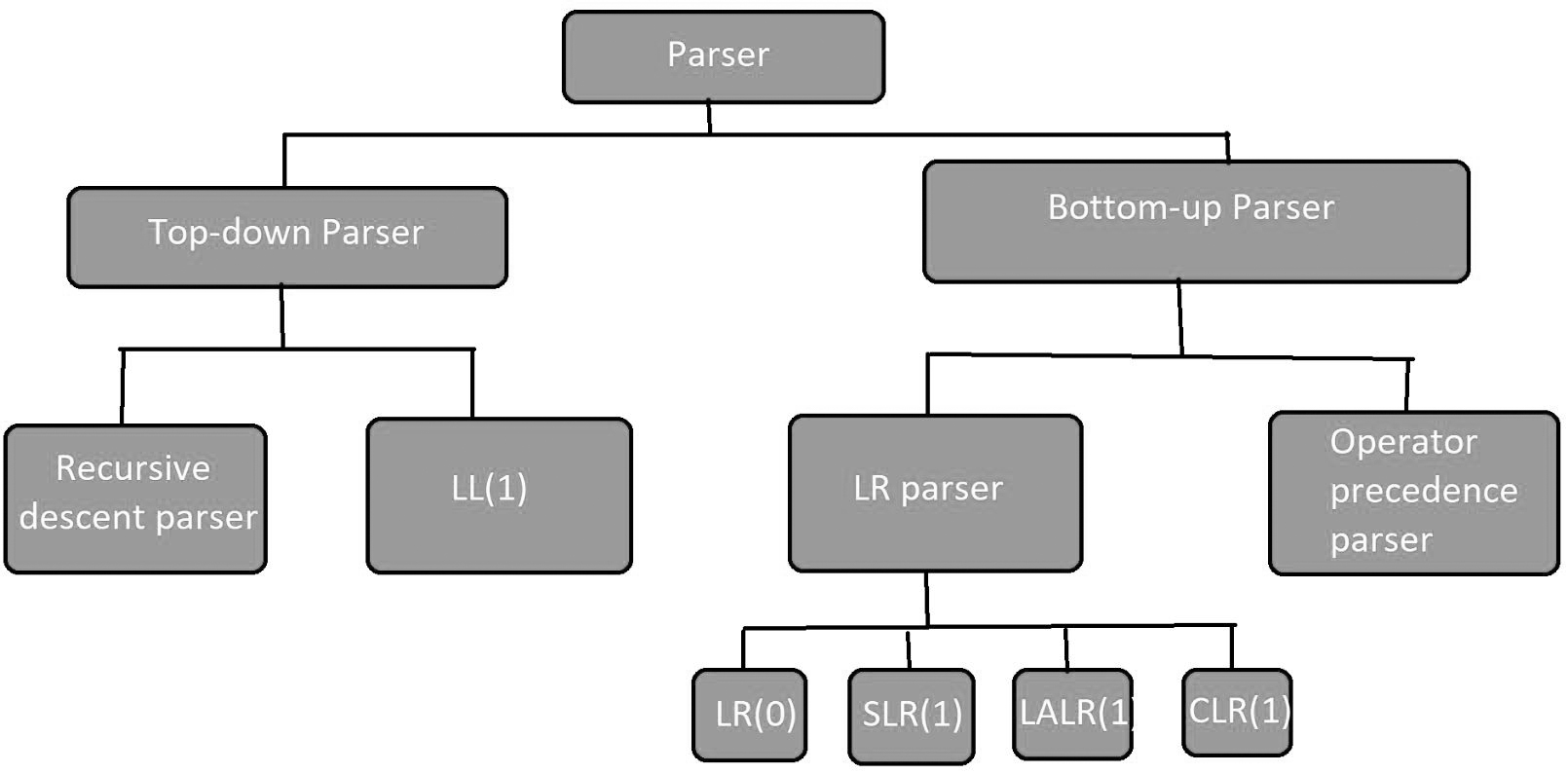Time: 2024-01-10 15:40:26View:
In compiler design, LR parsing is a type of bottom-up parser used to analyze and process the structure of a given input according to a formal grammar. The "L" stands for left-to-right scanning of the input, and the "R" stands for constructing a rightmost derivation in reverse. LR parsers are powerful and efficient tools for processing programming languages and other formal languages.
LR parsing is widely used in the implementation of compiler front-ends, where it is used to perform syntax analysis and construct the parse tree of the input program. The parse tree is then used for subsequent stages of the compilation process, such as semantic analysis, optimization, and code generation.
Overall, LR parsing is a fundamental concept in compiler design, providing a systematic and efficient approach to analyzing the syntax of programming languages and other formal grammars. Its versatility and power make it a crucial component in the development of compilers and other language processing tools.

There are several types of LR parsers, each with its own characteristics and capabilities. These types include LR(0), SLR(1), LALR(1), and CLR(1) parsers, and they differ in terms of the lookahead symbols they consider and the complexity of the parsing tables they use.

LR(0) parsers are the simplest type of LR parser. They use zero-symbol lookahead and are based on the LR(0) items, which are sets of items representing the possible states of the LR parser. While LR(0) parsers are simple to implement, they have limitations in handling certain grammars, particularly those with conflicts that arise from the lack of lookahead information.
SLR(1) parsers, which stands for "Simple LR(1) parsers," address some of the limitations of LR(0) parsers by using a single-symbol lookahead. This additional lookahead information allows SLR(1) parsers to handle a broader class of grammars compared to LR(0) parsers. SLR(1) parsers achieve this by using a more refined parsing table that takes into account the lookahead symbols when making parsing decisions.
LALR(1) parsers, or "Look-Ahead LR(1) parsers," further refine the capabilities of LR parsers by using a more compact parsing table while still considering a single-symbol lookahead. LALR(1) parsers are more powerful than SLR(1) parsers and can handle a wider range of grammars, making them a popular choice for many compiler implementations.
CLR(1) parsers, or "Canonical LR(1) parsers," are the most powerful type of LR parser. They use a canonical collection of LR(1) items and a parsing table that considers a single-symbol lookahead. CLR(1) parsers can handle a broader class of grammars compared to LALR(1) parsers, but they require more complex parsing tables and are generally more computationally intensive.
Each type of LR parser has its own trade-offs in terms of parsing power, table complexity, and computational requirements. The choice of which type to use depends on the specific requirements of the grammar being parsed and the resources available for the implementation of the parser. Overall, LR parsers provide a systematic and efficient approach to syntax analysis in compiler design, and the different types of LR parsers offer a range of options for handling various grammars and languages.
LR parsing is a bottom-up parser that is used in compiler design to analyze the syntax of a given input according to a formal grammar. The term "LR" stands for "left-to-right scanning of the input" and "rightmost derivation in reverse," which describes the approach the parser takes in processing the input.
The LR parsing process involves using a deterministic finite automaton (DFA) to recognize the structure of the input based on the given grammar. The parser maintains a stack to keep track of the symbols and their corresponding states as it processes the input. The key steps in the LR parsing process include shifting input symbols onto the stack and reducing the symbols on the stack according to the production rules of the grammar until the start symbol is reached.
The LR parsing algorithm operates by repeatedly performing two main actions: shifting and reducing. When a shift action is taken, the next input symbol is shifted onto the stack. When a reduce action is taken, a sequence of symbols on the top of the stack that matches the right-hand side of a production rule is replaced with the non-terminal symbol on the left-hand side of that rule.
The LR parsing process is driven by a parsing table, which is constructed based on the grammar being parsed. This table contains entries that specify the actions to be taken based on the current state of the parser and the next input symbol. The parsing table is typically generated using algorithms such as the canonical collection of LR(1) items for CLR(1) parsers or other similar methods for different types of LR parsers.
LR parsing is a powerful and efficient parsing technique, and it is widely used in the implementation of compiler front-ends for tasks such as syntax analysis and constructing the parse tree of the input program. The parse tree generated by the LR parser serves as the basis for subsequent stages of the compilation process, including semantic analysis, optimization, and code generation.
Overall, LR parsing provides a systematic and effective approach to analyzing the syntax of programming languages and other formal grammars. Its use of a parsing table and stack-based processing makes it a fundamental concept in compiler design, enabling the development of robust and efficient language processing tools.

LR parsers offer several advantages in the context of compiler design and language processing. These advantages stem from their ability to efficiently and systematically analyze the syntax of programming languages and other formal grammars.
One of the key advantages of LR parsers is their power and flexibility in handling a wide range of grammars. Depending on the specific type of LR parser used (such as LR(0), SLR(1), LALR(1), or CLR(1)), these parsers can handle different classes of grammars, from simpler grammars to more complex and ambiguous ones. This versatility makes LR parsers suitable for parsing a variety of programming languages and formal languages, providing a robust foundation for compiler front-ends.
LR parsers also offer efficient parsing performance. Their bottom-up parsing approach allows them to process the input in a manner that minimizes backtracking and reduces the need for lookahead, leading to faster parsing times compared to some other parsing techniques. This efficiency is crucial in the context of compiler design, where parsing is a fundamental step in the overall compilation process.
Additionally, LR parsers facilitate the construction of parse trees, which represent the syntactic structure of the input program. These parse trees serve as the basis for subsequent stages of the compilation process, such as semantic analysis, optimization, and code generation. The systematic nature of LR parsing ensures that the parse tree accurately reflects the syntax of the input, providing a solid foundation for further analysis and transformation of the program.
Furthermore, LR parsers are well-suited for error handling and recovery. Their bottom-up approach allows them to detect syntax errors early in the parsing process, and they can often recover from errors and continue parsing the input to identify additional issues. This capability is essential for providing informative error messages to programmers and for enabling the compiler to continue processing the input despite encountering errors.
Overall, the advantages of LR parsers, including their power, efficiency, support for parse tree construction, and error-handling capabilities, make them a fundamental and widely used tool in the field of compiler design. Their systematic approach to syntax analysis and their ability to handle a broad range of grammars make them a crucial component in the implementation of compilers and other language processing tools.
LR parsers are widely used in compiler construction and computer science due to their efficiency and ability to handle context-free grammars. They have numerous applications in various domains, some of which are outlined below.
In compiler construction, LR parsers are utilized to implement the syntax analysis phase. Once the parser successfully constructs the abstract syntax tree (AST) for the input program, it facilitates the writing of intermediate code and the execution of subsequent compiler phases.
LR parsers play a crucial role in processing programming languages, performing tasks such as parsing expressions and statements, managing the precedence and associativity of operators, and creating syntax-directed translations for language constructs.
In natural language processing, LR parsers are employed to recognize and analyze the structure of sentences. They find applications in language translation, speech recognition, and sentiment analysis.
LR parsers are also used in data validation tasks, where structured input needs to be parsed and verified against specific grammar rules or data constraints.
Furthermore, LR parsers are essential in parsing various data formats and protocols, including JSON, XML, YAML, and binary formats.
Lastly, LR parsers can evaluate complex expressions, particularly in mathematics, engineering, and scientific computing. Their ability to handle context-free grammars and efficiently process input makes them valuable in a wide range of applications.
In conclusion, LR parsers are a fundamental component of compiler design and language processing, offering a systematic and efficient approach to analyzing the syntax of programming languages and other formal grammars. Their ability to handle a wide range of grammars, their efficiency in parsing, and their support for constructing parse trees make them invaluable in the implementation of compiler front-ends. Additionally, LR parsers find applications in natural language processing, data validation, parsing data formats and protocols, and evaluating complex expressions in various domains. Overall, LR parsers play a significant role in computer science and have numerous practical applications, making them a crucial tool for language processing and analysis.